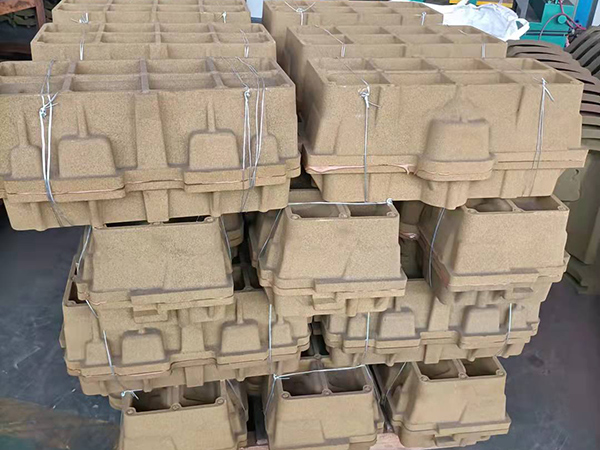
(lost foam casting examples)
Understanding Lost Foam Casting Examples in Modern Manufacturing
Lost foam casting (LFC) represents a transformative approach in metal casting where foam patterns are vaporized by molten metal to create complex geometries. This process begins with expandable polystyrene (EPS) beads molded into precise shapes, coated with refractory material, and embedded in unbonded sand. When liquid aluminum, iron, or steel enters the mold, it instantly replaces the vaporized foam to replicate intricate details. Unlike traditional sand casting which requires draft angles and parting lines, LFC enables:
- Net-shape production of hollow sections and internal channels
- 90-95% reduction in machining requirements
- Thinner walls (down to 3mm vs 5mm in conventional sand casting)
- Consistent surface finishes of 125-250 Ra µin
Material Innovations Driving Performance
Successful lost foam casting examples
rely heavily on material science advancements. Expandable polystyrene (EPS) remains the dominant pattern material due to its 99% air volume and clean vaporization properties. Recent breakthroughs include:
Refractory Coatings: Aluminosilicate-based slurries now achieve 0.3-0.8mm thicknesses with enhanced permeability. Adding zirconium flour increases refractoriness to 1700°C, enabling high-temperature alloys like nickel-based superalloys. Water-based coatings reduce VOC emissions by 65% compared to solvent alternatives.
Specialty Alloys: Automotive applications increasingly use compacted graphite iron (CGI) with 300-400 MPa tensile strength for engine blocks. A356 aluminum remains popular for aerospace brackets due to its 7% weight savings over steel equivalents.
Manufacturing Capabilities Comparison
| Manufacturer | Max Part Size (m) | Volume Capacity | Specializations | Accuracy (CT10-12) |
|---|---|---|---|---|
| Precision CastParts | 1.5×1.2×0.8 | 20,000+ units/month | Aerospace turbine housings | ±0.13mm |
| MetalTek International | 2.2×1.8×1.0 | 15,000 units/month | Marine impellers | ±0.20mm |
| Nelcast Limited | 3.0×2.5×1.2 | 45,000 units/month | Commercial vehicle components | ±0.30mm |
Leading suppliers differentiate through proprietary coating formulations and automated compaction systems that yield 20% higher dimensional consistency than industry averages.
Customization Capabilities for Complex Requirements
Engineers leverage lost foam casting for bespoke solutions unachievable with other processes. Recent projects demonstrate the customization spectrum:
Industrial Pump Housings: Integrated cooling channels reduced assembly part count from 17 to 1 while improving pressure rating by 75%. Production lead times decreased from 14 weeks to 6 despite complex internal geometries.
Renewable Energy Components: Wind turbine hubs cast in EN-GJS-400-18 ductile iron achieved 20-ton structural integrity with wall thickness transitions from 40mm to 15mm. Foundries eliminated 92% of secondary machining through strategic core positioning.
Transformative Implementation Case Studies
Heavy Machinery: John Deere's transition to lost foam for hydraulic valve bodies reduced component weight by 12% while maintaining 5,000 PSI pressure tolerance. This change eliminated 11 machining operations and decreased production costs by $47 per unit.
Architectural Hardware: Custom bronze door handles with intricate vine patterns were cast as single pieces rather than multiple sand-cast assemblies. This reduced finishing labor by 80 hours per 100 units while achieving 0.005mm pattern replication fidelity.
Medical Equipment: Portable X-ray bases shifted from sheet metal fabrication to LFC magnesium housings, cutting weight by 40% and improving radiation shielding efficiency by 18% due to optimized wall distribution.
Environmental and Economic Benefits
Compared to traditional green sand casting, lost foam casting demonstrates significant sustainability advantages. The absence of chemical binders reduces hazardous waste generation by 97%, while closed-loop sand reclamation systems achieve 99% reuse rates. Energy consumption analysis reveals:
- 27% reduction in melting energy per ton of castings
- 55% less landfill waste
- $18-$23 per ton savings through eliminated core-making equipment
Modern foam fabrication using carbon dioxide blowing agents instead of pentane has reduced atmospheric emissions by 87% since 2010.
Lost Foam Casting Examples Leading Industry Evolution
Future lost foam casting examples will increasingly feature computational optimization. Generative design algorithms now co-evolve component geometries with foam pattern layouts, reducing material usage by 30-40% in prototype testing. Digital twin simulations predict metal flow dynamics with 94% accuracy before tooling begins. Industry 4.0 integration enables real-time monitoring of coating viscosity and sand compaction through IoT sensors, minimizing defect rates below 0.8%. As global demand grows at 5.3% CAGR through 2030, manufacturers investing in these technologies will continue redefining component design possibilities while maintaining cost efficiency in aluminum, iron, and steel implementations.

(lost foam casting examples)
FAQS on lost foam casting examples
Q: What are common examples of lost foam casting products?
A: Lost foam casting is used to create complex parts like engine blocks, pump housings, and intricate machinery components. Its ability to replicate detailed geometries makes it ideal for automotive and industrial applications.
Q: How do lost foam casting examples differ from sand casting products?
A: Lost foam casting produces smoother surfaces and finer details (e.g., art pieces) compared to sand casting, which is better for bulkier items like manhole covers or pipe fittings. Sand casting uses reusable molds, while lost foam molds evaporate during casting.
Q: What are typical examples of sand casting products?
A: Sand casting is widely used for heavy-duty parts like gearboxes, hydraulic valves, and drainage grates. Its cost-effectiveness and versatility make it suitable for large, simple-shaped components in construction and manufacturing.
Q: What materials are used in lost foam casting?
A: Lost foam casting primarily uses expanded polystyrene (EPS) foam for patterns and refractory coatings like alumina or silica sand. Molten metals like aluminum, iron, or steel are then poured to replace the vaporized foam.
Q: Why are specific materials chosen for lost foam casting?
A: EPS foam is lightweight and easy to carve, enabling precise designs. Refractory coatings prevent mold collapse, while metals like aluminum ensure fluidity to fill intricate cavities before the foam fully degrades.
Next:Premium Facing Sand for Foundry Casting High-Temperature Resistance
